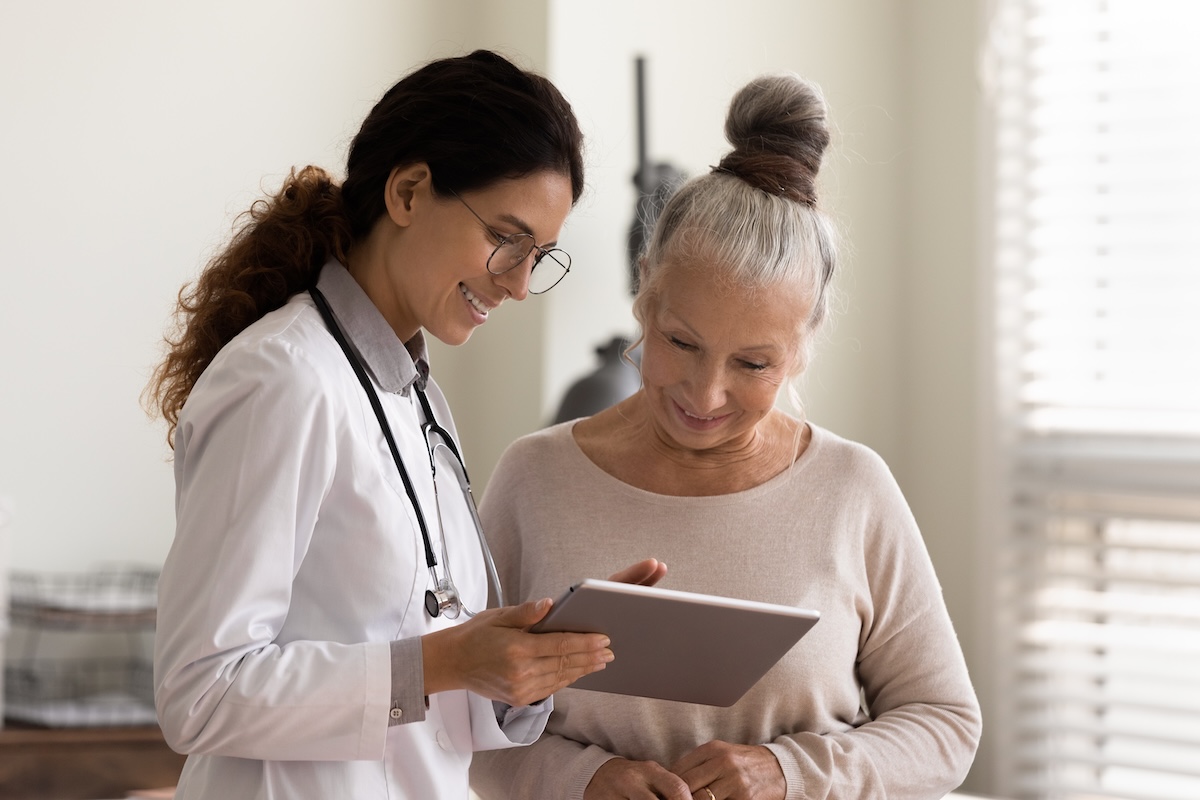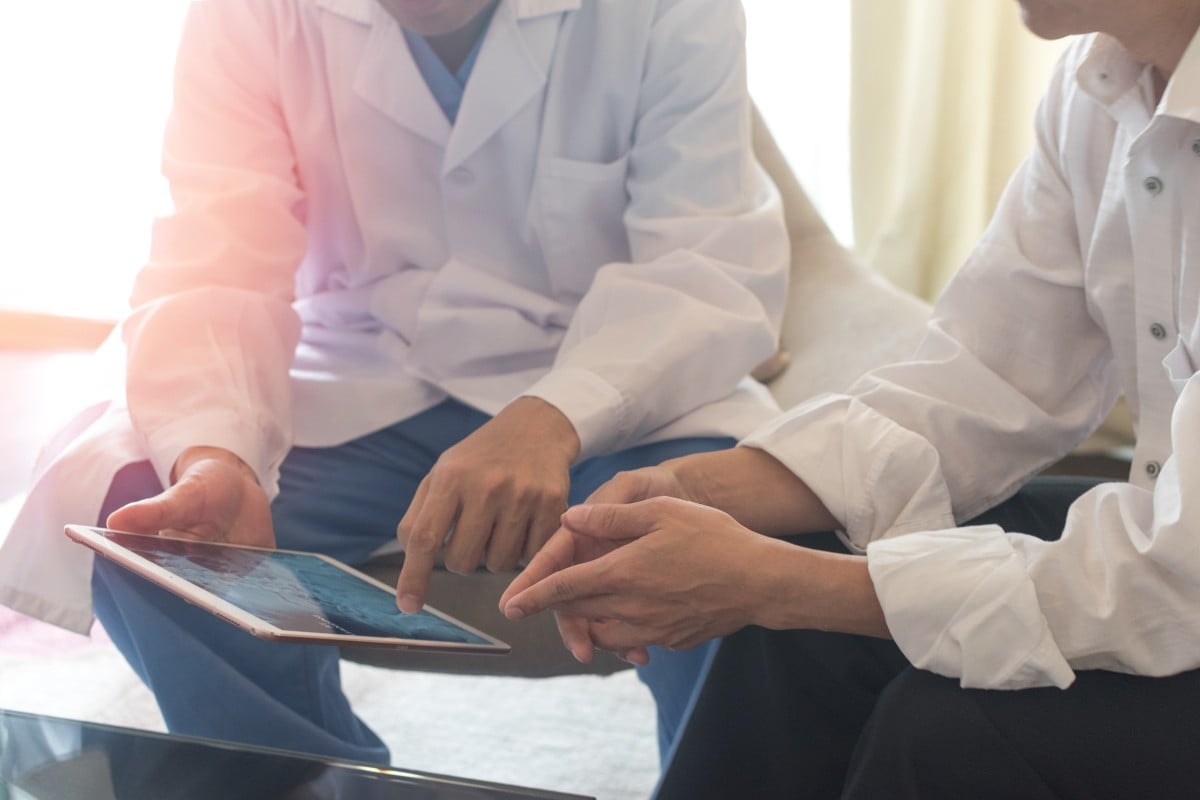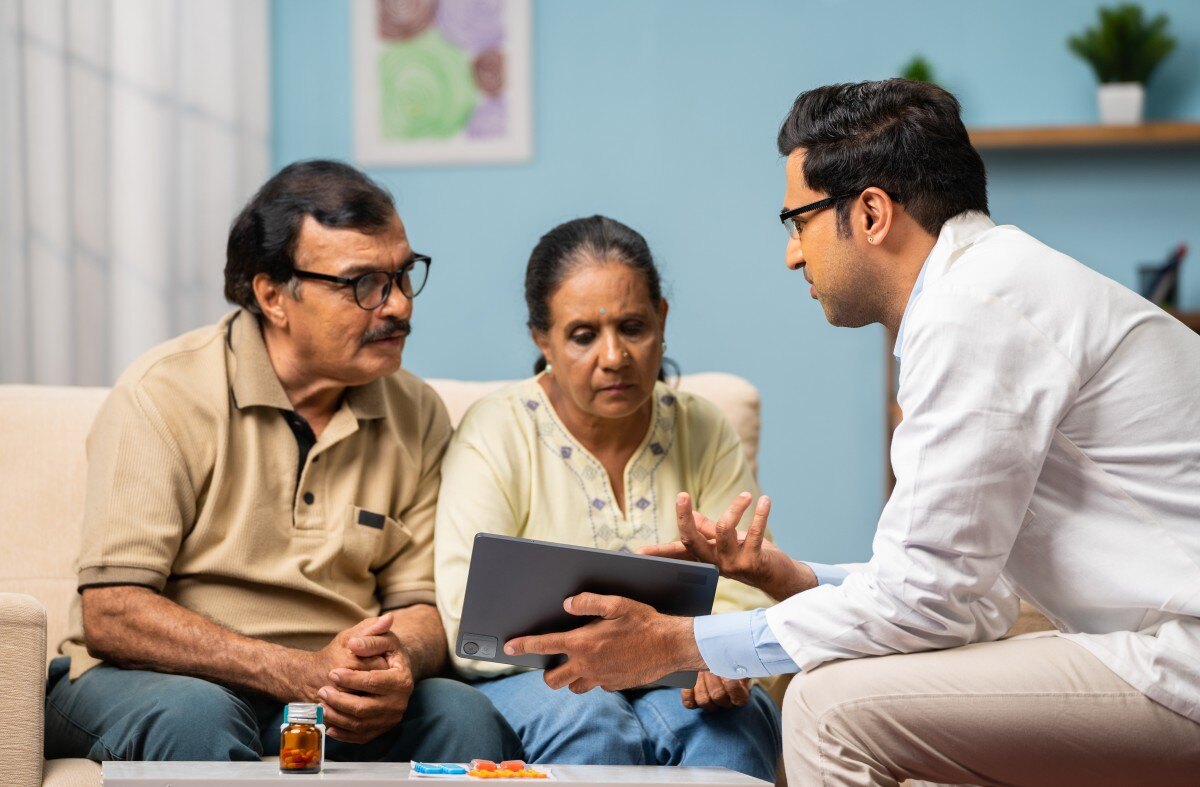Using Patient Education Videos to Support Preventive Care Strategies
As a healthcare provider, you know prevention saves lives. From routine screenings and lifestyle counseling to vaccinations and early detection,...
5 min read
Robert McDermott Apr 4, 2024 11:45:00 AM
 40% of Americans are watching videos online daily. Of the folks who are watching videos, it’s estimated that 95% of them retain the information they see in a video vs 10% who get the same information via text/print media. In the hands of a healthcare provider, video can be an essential and valuable tool for patient education.
40% of Americans are watching videos online daily. Of the folks who are watching videos, it’s estimated that 95% of them retain the information they see in a video vs 10% who get the same information via text/print media. In the hands of a healthcare provider, video can be an essential and valuable tool for patient education.
Quick Links
Patient education plays a pivotal role in modern healthcare, and, simply put, healthcare practices cannot afford to ignore or neglect it. In fact, patient education is pivotal for fostering informed decision-making, enhancing patient outcomes, and promoting overall wellness.
At the heart of patient education lies empowerment. Equipping patients with relevant information about their conditions, treatment options, and preventive measures, enables them to take an active role in managing their health.
Similarly, informed patients are better positioned to collaborate effectively with their healthcare team, ask pertinent questions, and make decisions aligned with their values and preferences. This collaborative approach can help foster a sense of ownership over one's health, boosting adherence to treatment plans and, ultimately, delivering better health outcomes.
Further, patient education can serve as a catalyst for preventive healthcare which is an essential aspect of any patient’s well-being. Obviously, the ability to prevent issues or catch them at an early stage can improve outcomes. Patient education helps raise awareness about lifestyle modifications, early warning signs, and screening protocols, helping individuals adopt healthier behaviors and detect potential health issues.
Finally, it’s worth noting that, in a digital age, information is abundant. Unfortunately, so is misinformation. For that reason, patient education has become an even more important aspect of the services delivered by healthcare providers. Patient education is not just about sharing information; it's about fostering empowerment, promoting wellness, and transforming healthcare delivery.
 Traditional Patient Education Tools
Traditional Patient Education ToolsWhile modern technology has introduced innovative methods for patient education, many practices still rely on more traditional patient education tools. That said, even with new methods, those traditional tools remain valuable in helping promote understanding and communication between healthcare providers and patients.
One of the most traditional patient education tools is the pamphlet or brochure. They’re typically concise, visually appealing and provide information on various health topics, treatment options, and preventive measures. They’re easy to distribute and make available for self-service. They can be great references for patients to review at their own pace, reinforcing key points discussed during consultations. And, while they’re also easy to share with family members or caregivers who help make medical decisions, they’re equally easy to misplace, forget, or lose.
Face-to-face education sessions are also a common traditional patient education tool utilized by healthcare professionals. And, there’s evidence to suggest that patients prefer face-to-face communication. Whether in individual or group settings, these sessions offer personalized guidance tailored to a patient's needs and preferences.
Through dialogue and interactive demonstrations, patients can ask questions, clarify doubts, and receive hands-on instruction on self-care practices, medication administration, and lifestyle modifications. However, even with face-to-face communication, there are inherent barriers. From language and comprehension issues to an inability to recall important information later,
Face-to-face discussions may include the use of visual aids such as anatomical models, diagrams, and charts. These can enhance comprehension by providing a tangible representation of complex medical concepts. While these tools may help facilitate discussions between patients and providers, they are not without obstacles as well.
As noted above, language and comprehension barriers may be a struggle in face-to-face communications. Similarly, these visual aids don’t travel with patients who may need to relay important information to the individuals who help them make care decisions.
Essentially, while technology will continue to revolutionize patient education, traditional tools still have value. Leveraging pamphlets, face-to-face sessions, and visual aids, in conjunction with the tech tools available means more and better ways healthcare providers can empower patients to make informed decisions and actively participate in their care journey.
Technology will never replace traditional patient education tools, but it’s important to note that those traditional tools come with challenges and gaps. In short, there are unavoidable barriers to patient education.
As mentioned above, it can be difficult for patients to relay vital information to caregivers or family members. This is especially true in the case of a new diagnosis or extensive treatment plan. Similarly, language and cultural barriers may impact a patient’s understanding of information as well as their ability to translate it to others.
There are additional challenges for healthcare providers when it comes to brochures, pamphlets, and other paper educational tools. To start, they’re costly, especially when branded. While programs and partnerships can help alleviate some of those costs, pamphlets and brochures take resources.
The same is true when it comes to providing up-to-date information. Print media does not move quite as quickly as digital, so keeping on top of clinical information and more can be difficult when relying solely on print media.
And finally, while paper materials are easy to carry and easy to share, they can also be lost or destroyed fairly easily. In contrast, digital media provides additional methods of communicating complex information, providing both visual aids and, in some cases, bi or multilingual audio information, closed captions, and more. When paired with traditional educational tools, healthcare providers can be sure patients are getting information with their needs in mind.
 Why Video is an Exceptional Patient Education Tool
Why Video is an Exceptional Patient Education ToolWhile traditional patient education tools are a strong foundation, video offers a more dynamic medium. Because it engages multiple senses simultaneously, it facilitates a deeper understanding of, potentially, complex issues or treatments.
To start, video allows patients to absorb information through both sight and sound. This multimodal approach enhances both comprehension and retention while catering to diverse learning styles. Complex medical procedures or anatomical explanations can be demonstrated step-by-step, making abstract concepts more tangible and easier to grasp.
Additionally, video offers the flexibility of delivery across various platforms and devices, making it accessible to a wide audience. Whether accessed through a clinic's website, a patient portal, or a mobile app, videos can reach patients wherever they are, at their convenience. This is among the greatest benefits as it allows patients to easily and readily share information with others who may assist with decision making.
Further, this accessibility is particularly valuable for patients with diverse backgrounds or limited literacy, as it transcends language barriers and accommodates different levels of health literacy.
More specifically, video allows for the inclusion of multiple languages and close captioning which can significantly decrease language barriers for a variety of patients. User-friendly platforms, interactive tools, and personalized resources, allow patients to access and understand the patient education resources that empower them to make informed decisions about their health.
Many healthcare providers understand the importance and value of video, afterall it can significantly improve treatment plan adherence and, in turn, that improves patient outcomes and practice health.
Still, incorporating patient education videos into a healthcare practice isn’t always simple. There’s the cost, the content, the video itself and more. For many healthcare practices, the resources to create a robust, high quality, bilingual video library is prohibitive.
So, don’t try to take on the massive project of creating these videos yourself. You’ll be better served utilizing a video library service that can be accessed immediately when your patient is in the office and is also mobile flexible. It’s necessary to be discerning of the platform you choose. You’ll benefit from a video platform that covers well beyond common procedures and treatments. It’s also important to consider relevant quality factors needed for today’s consumer -- the patient in your chair. That means your videos also:
We know that patient education videos can decrease fear, improve patient experience, boost treatment plan acceptance, and improve revenue to your practice as treatment plans are closed. Leveraging technology has changed healthcare practice administration. It’s time for it to change the patient experience.
Isn’t it time you added video to your patient education toolbox? If you’re ready to see what that might look like, check out an iCoreAcademy demo today.

As a healthcare provider, you know prevention saves lives. From routine screenings and lifestyle counseling to vaccinations and early detection,...

There’s no denying that the AI boom is here. The American Medical Association reports that 66% of physicians are currently using artificial...

If only managing your practice’s revenue cycle came with a crystal ball. You could spot claim denials before they happen, predict when patients might...

If making decisions were simple, we wouldn’t have countless books, seminars, webinars, or conferences with experts weighing in about how to improve...

While many Americans know how essential dental care is to their overall health, nearly 40 million avoid the dentist. One way dentists and dental...

Wondering how to make a home repair? Car repair? Get a good workout? Learn a language? There’s a video for that. Increasingly, in classrooms across...